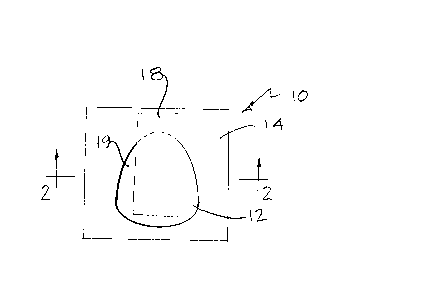Some of the information on this Web page has been provided by external sources. The Government of Canada is not responsible for the accuracy, reliability or currency of the information supplied by external sources. Users wishing to rely upon this information should consult directly with the source of the information. Content provided by external sources is not subject to official languages, privacy and accessibility requirements.
Any discrepancies in the text and image of the Claims and Abstract are due to differing posting times. Text of the Claims and Abstract are posted:
| (12) Patent Application: | (11) CA 2190205 |
|---|---|
| (54) English Title: | FINGERNAIL ORNAMENTING PATCHES |
| (54) French Title: | PIECES DECORATIVES D'ONGLES |
| Status: | Deemed Abandoned and Beyond the Period of Reinstatement - Pending Response to Notice of Disregarded Communication |
| (51) International Patent Classification (IPC): |
|
|---|---|
| (72) Inventors : |
|
| (73) Owners : |
|
| (71) Applicants : |
|
| (74) Agent: | ADE & COMPANY |
| (74) Associate agent: | |
| (45) Issued: | |
| (22) Filed Date: | 1996-11-13 |
| (41) Open to Public Inspection: | 1998-05-13 |
| Availability of licence: | N/A |
| Dedicated to the Public: | N/A |
| (25) Language of filing: | English |
| Patent Cooperation Treaty (PCT): | No |
|---|
| (30) Application Priority Data: | None |
|---|
Human nails are ornamented using a patch of flexible plastic
sheet material with a pressure-sensitive adhesive on a back side. The
patches are mounted on a release sheet and may be peeled from the release
sheet using a pre-mask element adhered to the front face of the patch with
an adhesive that has a stronger bond to the front face of the patch than the
bond between the pressure-sensitive patch mounting adhesive and the
release sheet. The pre-mask is then used for applying the patch to the nail.
Les ongles des personnes sont décorés au moyen d'une bande adhésive constituée d'une pellicule de plastique souple comportant un adhésif autocollant sur la surface arrière. Les bandes adhésives sont placées sur une feuille anticollante et peuvent en être retirées au moyen d'un élément prémasqué. Cet élément est collé à la face avant des bandes grâce à un adhésif présentant une adhérence plus élevée que celle entre l'adhésif autocollant à l'arrière de la bande et la feuille anticollante. Il sert ensuite à poser les bandes sur les ongles.
Note: Claims are shown in the official language in which they were submitted.
Note: Descriptions are shown in the official language in which they were submitted.

2024-08-01:As part of the Next Generation Patents (NGP) transition, the Canadian Patents Database (CPD) now contains a more detailed Event History, which replicates the Event Log of our new back-office solution.
Please note that "Inactive:" events refers to events no longer in use in our new back-office solution.
For a clearer understanding of the status of the application/patent presented on this page, the site Disclaimer , as well as the definitions for Patent , Event History , Maintenance Fee and Payment History should be consulted.
| Description | Date |
|---|---|
| Inactive: IPC deactivated | 2013-11-12 |
| Inactive: IPC assigned | 2013-01-07 |
| Inactive: First IPC derived | 2006-03-12 |
| Application Not Reinstated by Deadline | 1999-11-15 |
| Time Limit for Reversal Expired | 1999-11-15 |
| Deemed Abandoned - Failure to Respond to Maintenance Fee Notice | 1998-11-13 |
| Application Published (Open to Public Inspection) | 1998-05-13 |
| Abandonment Date | Reason | Reinstatement Date |
|---|---|---|
| 1998-11-13 |
Note: Records showing the ownership history in alphabetical order.
| Current Owners on Record |
|---|
| DICK D. HOEFER |
| Past Owners on Record |
|---|
| None |